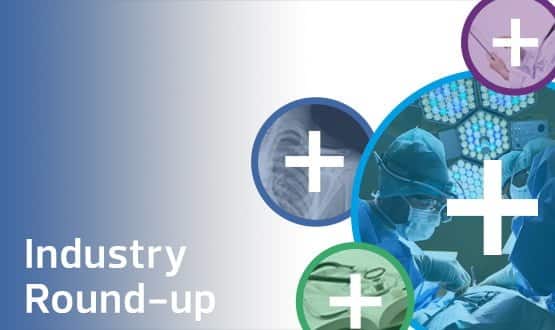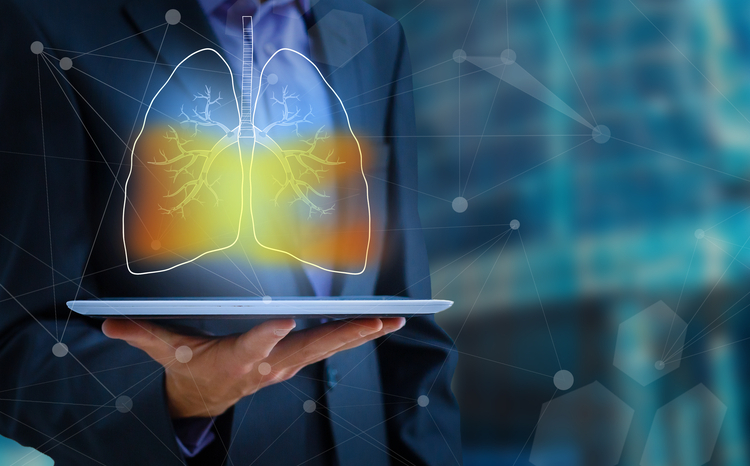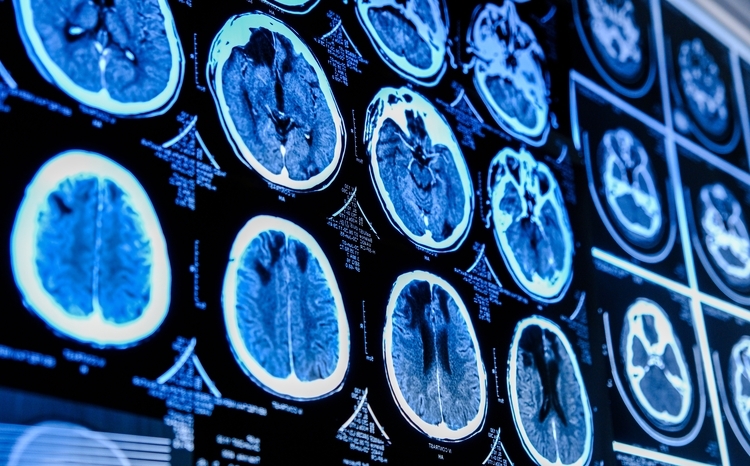Industry news in brief
- 22 July 2022

This edition of Digital Health News industry round-up includes a virtual reality smartphone app for beating phobias and a project which involves artificial intelligence (AI) being used for lung cancer diagnosis.
Healthy.io receives FDA clearance for smartphone-powered kidney test
Healthy.io has announced that it has received 510(k) clearance from the US Food and Drug Administration for home use of the Minuteful Kidney test. It’s the first time that the FDA has given clearance for a smartphone-powered home test for detecting chronic kidney disease.
The digital test provides on-the-spot results and is a clinical grade ACR [urine albumin to creatinine ratio] test which can be carried out at home with a simple smartphone scan.
The solution was adopted by the NHS as its leading AI tool used to spot early signs of kidney degradation. Since its introduction in the UK, it has enrolled more than 540,000 people and saved the NHS 2.5million hours of dialysis annually.
Typically patients at risk of chronic kidney disease would need to have an annual test carried out by a medical practitioner. With Minuteful, they can use their smartphone camera to conduct a simple urine test that can identify the specific protein that indicates early signs of the disease.
“We have the experience, results, and regulatory assurances to fundamentally change how Americans monitor chronic conditions using their smartphone camera”, said Healthy.io founder and CEO Yonatan Adiri.
“In effect, Minuteful Kidney is a digital antidote that can help every person at-risk dramatically decrease their probability of undergoing dialysis. We look forward to bringing our technology to millions of Americans across all socioeconomic levels, preventing CKD, lowering rates of dialysis, and reducing healthcare costs.”
Mid and South Essex harness AI power for lung cancer diagnosis
The Targeted Lung Health Checks (TLHC) programme is using AI technology to support the identification of cancers at an earlier stage.
The programme gives support to radiologists by producing timely and accurate reports. Not only does it help to detect any cancer at an earlier stage, improving outcomes for patients, but it can also save radiologists time.
Ermano Cupano, consultant radiologist at Mid and South Essex Foundation Trust, and lead on the TLHC programme, said: “We have found that the reporting of the scans and detail has been helpful in reducing time spent analysing scans. It’s provided a good comparison in patients where follow-up is needed for nodules (small lumps) and this supports our decision-making.”
The AI tech is accessible on the usual Picture Archiving and Communication Systems (PACS) which also makes it simple and practical for radiologists to use.
The Mid and South Essex Integrated Care Board is also trialling AI to get more accurate diagnostics for skin cancers. So far, 43 GP practices have used the service and it has led to fewer referrals on the cancer pathway, freeing up time for more serious conditions.
The technology used is Aidence’s Veye Lung Nodules. Francesca Evans, from Aidence, said: “AI in medical imaging is the radiologists’ extra pair of eyes. It helps them manage their workload and make sure they don’t miss anything. The doctor always has the final say in diagnosis, treatment, and next steps.
“A person’s journey to diagnosis stays the same. They will still see a radiographer when they come for a scan and a multidisciplinary team will discuss the results once a radiologist has reported on the scan. A radiologist using AI might have more time to focus on a person’s case or explain the results than one who is not.”
MHRA authorises GS1 standards to identify medical devices
The Medicines and Healthcare products Regulatory Agency (MHRA) has stated its intention to authorise the use of GS1 standards to uniquely identify medical devices and enhance patient safety.
Following MHRA’s consultation on the future regulation of medical devices in the UK, 80 per cent of respondents advocated the use of GS1 data standards. This includes Global Trade Item Numbers (GTINs) to uniquely identify, track and trace medical devices across healthcare supply chains.
It now plans to authorise GS1 as an issuing entity for Unique Device Identification (UDI), which will support the government’s strategy for strengthening regulations and providing consistency for manufacturers and healthcare providers.
The alignment of the new UDI system with existing international regulations will deliver a globally harmonised framework. This will reduce the risk of clinical error and also support the swift and effective product recalls needed in the event a potentially harmful device enters the market.
Glen Hodgson, head of healthcare at GS1 UK, said: “More than 90% of medical device manufacturers are already using GTINs as the primary identifier in the United States’ FDA Global Unique Device Identification Database. Couple this with the fact that GS1 is already authorised as an issuing entity for many other international medical device regulations, we are pleased to see the MHRA align on this matter.
“We will continue to support our members with the adoption of GS1 standards to ensure consistency and standardisation across the board. It is a key part of ensuring traceability and more importantly, patient safety.”
As a result of the consultation’s recommendations the government will require all manufacturers to assign UDIs to all products. Any reuseable devices will need to have a scannable UDI carrier such as a barcode or Radio Frequency Identification (RFID) tag.
The government also intends to use data standards to uniquely identify manufacturers, UK Responsible Persons, importers and distributors and require them to register with the MHRA.
VR app shown to reduce common phobias
A clinical trial from New Zealand has confirmed that using a headset and a smartphone app treatment programme could reduce common phobias by up to 75% over a six-week period.
The trial was carried out at the University of Otago’s Department of Psychological Medicine. It combined a VR (virtual reality) headset with a fully self-guided smartphone app called oVRcome. oVRcome is a combination of virtual reality 360-degree video exposure therapy and cognitive behavioural therapy (CBT).
The app and the headset work together to immerse users in virtual environments to relax and distract them.
The trial was led by associate professor, Cameron Lacey, who said: “The improvements they reported suggest there’s great potential for the use of VR and mobile phone apps as a means of self-guided treatment for people struggling with often-crippling phobias.
“Participants demonstrated a strong acceptability of the app, highlighting its potential for delivering easily accessible, cost-effective treatment at scale, of particular use for those unable to access in-person exposure therapy to treat their phobias.”
The six-week, randomised, controlled trial studied a total of 129 people. While using the programme they were asked to complete weekly questionnaires to record progress.
The app included exposure therapy, a type of CBT which exposes users to their specific phobia in short bursts with the aim of building up their tolerance to it in a controlled way. It also included psychoeducation, relaxation, mindfulness, cognitive techniques and a relapse prevention model.
NHS frontline staff say lack of tech investment is hindering them
Sixty one per cent of NHS frontline staff believe a lack of investment in technology is hindering their wellbeing and career progression, according to a study carried out by YouGov for SAP.
Of those taking part in the study, 61% say their managers don’t have the access to adequate tools and systems to assess and track their performance and wellbeing. While almost half (49%) agree that there’s just not enough investment in the tools and systems required to help their career progress.
Managers themselves accept they are working with limited resources to help frontline staff perform at their best. SAP’s Remedy for a Stressed-Out Workforce: Digital Innovation at the NHS report revealed that 89% of managers say they want the opportunity to harness technology to deliver great people and line management services. In addition, 80% think that having access to more or better digital tools and platforms will help them to create more timely, standardised services for patients and staff.
“While frontline staff and NHS management have shown immense resilience, the pandemic has exposed yet more shortcomings in the healthcare service’s business processes, systems and applications, especially in those designed to support its ever-pressured workforce” said Satpal Biant, head of public sector at SAP UK and Ireland.
“Technology isn’t a silver bullet solution for these problems, but it’s an effective enabler – by applying technological tools we can create long-term, trusted, sustainable, people-first systems that meet the needs of every single employee, every day.”




